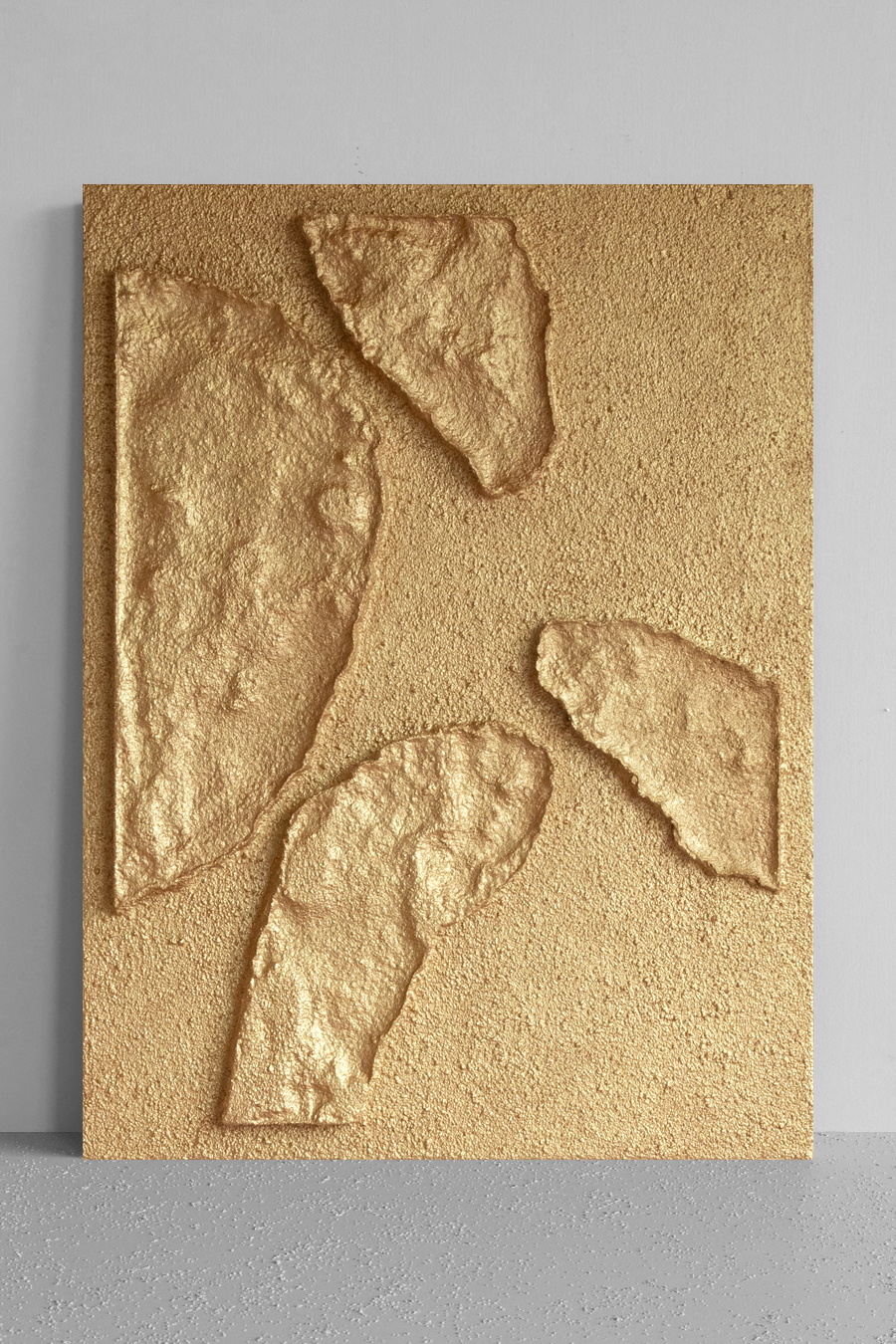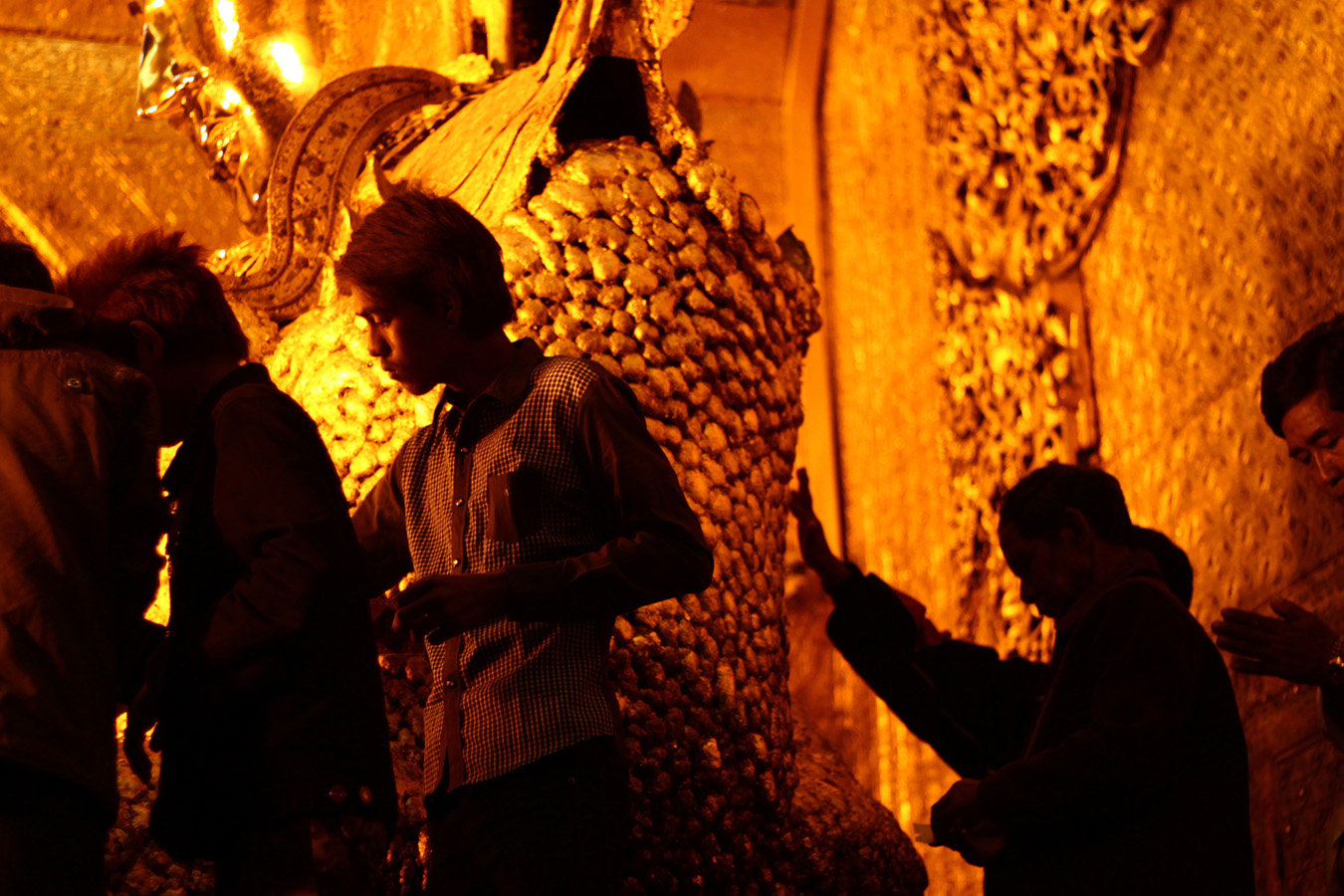 Bagan, Myanmar.
Bagan, Myanmar.
Gold fascinates. It captivates the eye, ignites the imagination.
Its warm light seems to contain the sun itself.
From the Inca Empire to the Mayan cities to the Aztec kingdoms, every civilization has venerated gold, attributing to it a sacred dimension, a link with the divine.
Why such importance? After all, it is only one geological extract among many.
These fake nuggets reflect our fascination with appearances, revealing the fragile line between reality and illusion.
They testify to our tendency to seek brilliance, to seek meaning in what glitters.
In this paradox, the fake becomes more than a deception; it becomes the symbol of our complex relationship with beauty, with truth.
L'or fascine. Il captive le regard, enflamme l'imagination. Sa lumière chaude semble contenir le soleil lui-même.
De l'Empire inca aux cités mayas en passant par les royaumes aztèques, toutes les civilisations ont vénéré l'or, lui attribuant une dimension sacrée, un lien avec le divin.
Pourquoi une telle importance ? Après tout, il n'est qu'un extrait géologique parmi tant d'autres.
Ces fausses pépites reflètent notre fascination pour les apparences, révélant la frontière fragile entre réalité et illusion.
Elles témoignent de notre tendance à rechercher l'éclat, à chercher du sens dans ce qui brille.
Dans ce paradoxe, le faux devient plus qu'une supercherie, il devient le symbole de notre relation complexe à la beauté, à la vérité.

 "Goldmine 1" Sculpture
"Goldmine 1" SculptureRecycled polystyrene, sand, paint
 "Goldmine 2" Sculpture
"Goldmine 2" SculptureRecycled polystyrene, sand, paint
 "Goldmine 3" Sculpture
"Goldmine 3" SculptureRecycled polystyrene, sand, paint

 "Goldmine 4" Sculpture
"Goldmine 4" SculptureH20 cm_Recycled polystyrene, sand, paint
 "Goldmine 5" Sculpture
"Goldmine 5" SculptureH19cm_Recycled polystyrene, sand, paint
 "Goldmine 5" Sculpture
"Goldmine 5" SculptureRecycled polystyrene, sand, paint

 "Goldmine 6" Sculpture
"Goldmine 6" SculptureRecycled polystyrene, sand, paint
 "Goldmine 7" Set of sculptures
"Goldmine 7" Set of sculpturesRecycled polystyrene, sand, paint
 "Goldmine 7" Sculpture (part of a set)
"Goldmine 7" Sculpture (part of a set)On display in a project by SOURCE Architecture

 "Goldmine" Ring
"Goldmine" RingSize 60_Golden brass
 "Goldmine" Ring
"Goldmine" RingSize 60_Golden brass


 "Goldmine 2" Painting.
"Goldmine 2" Painting.H35 L60 cm_Wood, polystyrene, sand, paint.
 "Goldmine 1" Painting.
"Goldmine 1" Painting.H50 L40 cm_Wood, polystyrene, sand, paint.



